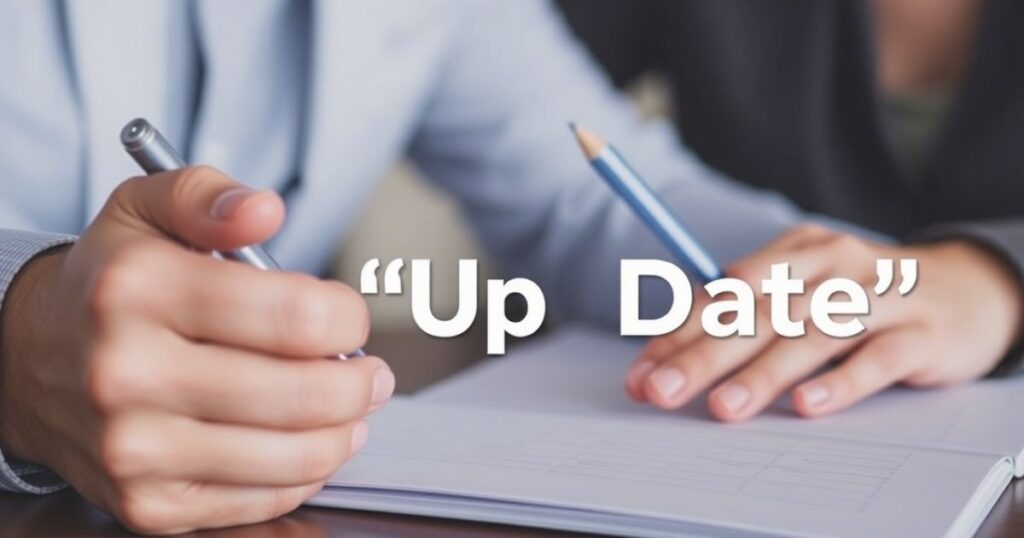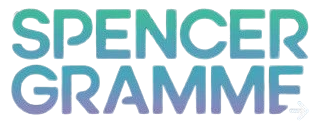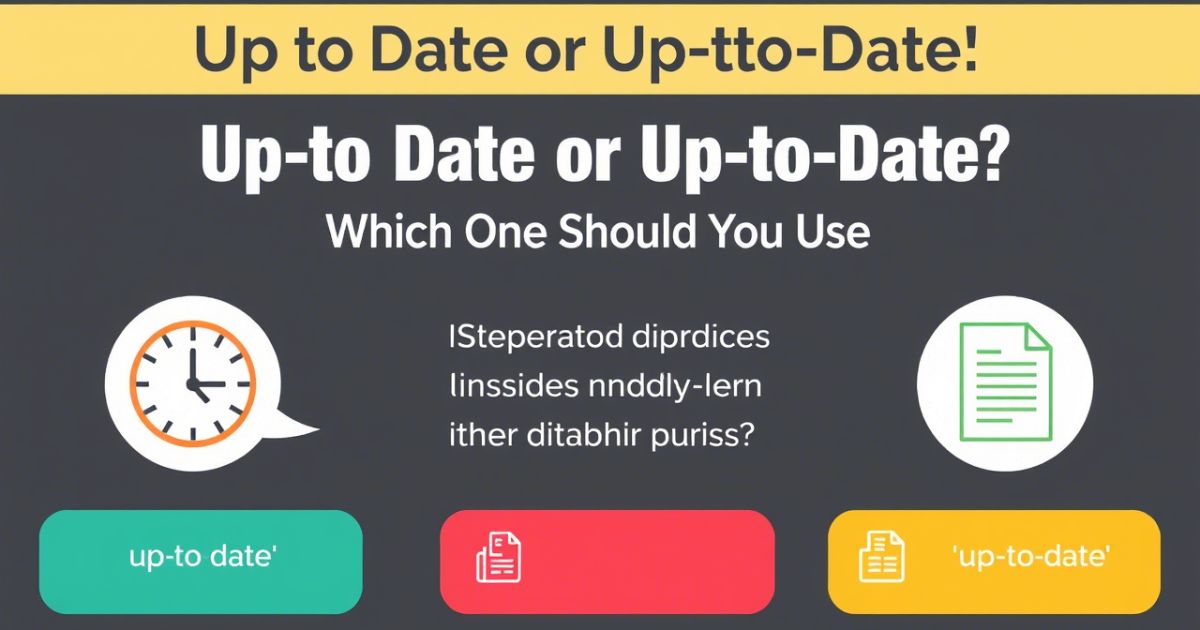Ever wondered if it’s “up to date or up-to-date“? You’re not alone! While the difference is simple, getting it right can make your writing clearer and more professional. “Up to date” is an adverbial phrase, while “up-to-date” is an adjective. But here’s the key question: is “up to date” hyphenated? The answer depends on the context! It’s only hyphenated when used as an adjective.
Many people confuse “up to date or up-to-date,” but using the right form is crucial for accurate communication. Whether you’re wondering “how to write up to date” or just aiming to improve your writing, understanding this distinction ensures your work stands out. So, remember: from up-to-date or up to date use “up-to-date” to describe something current and “up to date” when referring to an action!
Why is There Confusion?
The confusion between “up to date or up-to-date” stems from the subtle difference in their grammatical roles. Many writers struggle to identify when to use the hyphenated form versus the non-hyphenated one, especially since both sound identical in speech.
English hyphenation rules can be tricky and inconsistent, leading even experienced writers to second-guess themselves. Moreover, the rise of informal digital communication often blurs the lines between correct and casual usage, making the distinction even harder to remember.
What Does “Up to Date” Mean?

“Up to date” is an adverbial phrase used to describe the action of bringing something current or aligned with the latest standards. It usually appears after a verb and emphasizes the process of updating rather than the state of being current.
For example, in the sentence “The team brought the records up to date or up-to-date,” the phrase explains the action of making the records current. Since it’s functioning as part of a verb phrase, no hyphens are needed. This form is common when talking about efforts to revise, update, or modernize something.
Is “Uptodate” Correct?
The term “up to date” signifies that something is current, modern, or has been recently updated. When used as an adverbial phrase, it describes the act of keeping something in line with the latest information or developments.
For instance, “The system was kept up to date” means that the system was consistently updated. It’s important to avoid the incorrect form “uptodate,” as it’s a common mistake. To ensure grammatical accuracy, always use “up to date” as two separate words when referring to something being updated or current.
“Up to Date” vs “Up-to-Date”
“Up to date” is used as an adverbial phrase to indicate that something is current or recent. On the other hand, “up-to-date” is the correct adjective form, used up to date or up-to-date to describe something that is modern or has been updated, like in “an up-to-date system.” The key difference lies in the use of hyphens when it functions as an adjective.
When to Use “Up to Date”
“Up to date” is written without hyphens when it acts as an adverbial phrase, typically following a verb. It signifies that something has been updated or brought to the present standard. For instance:
- Example: “The manager made sure the documents were up to date.”
In this example, “up to date” follows the verb “were,” indicating the action of updating the documents.
When to Use “Up-to-Date”
“Up-to-date” is written with hyphens when it functions as an adjective before a noun. It describes something that is current or has been updated to include the most recent information. For example:
- Example: “They purchased the up-to-date equipment for the project.”
In this case, “up-to-date” modifies the noun “equipment,” meaning the equipment is current and modern.
The Importance of Context
Understanding the context in which “up to date or up-to-date” is used is crucial for proper grammar. The distinction between the two depends on whether the phrase functions as an adverb or an adjective, and using the correct form ensures clarity and accuracy in communication.
| Aspect | “Up to Date” | “Up-to-Date” |
| Part of Speech | Adverbial phrase | Adjective phrase |
| Function | Describes an action of bringing something current | Describes something that is already current or updated |
| Usage | Used after a verb to describe the act of updating | Used before a noun to describe something as current |
| Example Sentence | “She brought the report up to date.” | “He gave me an up-to-date report.” |
| Common Confusion | Often mistaken as an adjective phrase | Often used incorrectly as an adverbial phrase |
Synonyms for “Up to Date” and “Up-to-Date”

Both “up to date or up-to-date” have various synonyms that can be used depending on the context. For example, “current,” “modern,” “recent,” and “contemporary” can replace “up to date” when referring to something that has been updated or is in line with the latest information.
Similarly, terms like “state-of-the-art” or “cutting-edge” are often used as synonyms for “up-to-date” when describing something that is advanced or fully updated.
Synonyms for “Up to Date” (Adverbial Phrase)
When using “up to date” as an adverbial phrase, consider these synonyms:
- Current: Reflects the most recent information or status.
Example: “We need to keep our records current.” - Updated: Indicates that something has been made more recent or improved.
Example: “The software was updated yesterday.” - Modernized: Refers to bringing something into the present with the latest advancements.
Example: “The website was modernized to meet current standards.” - Recent: Denotes the latest or most current in time.
Example: “The news is recent, so it’s still relevant.” - State-of-the-art: Describes something that is the most advanced or cutting-edge.
Example: “They installed a state-of-the-art system for better efficiency.” - Contemporary: Refers to something that is current and relevant in the present.
Example: “The design is contemporary, reflecting modern trends.” - Informed: Implies having the latest knowledge or information.
Example: “She is well-informed about the latest updates.” - Up-to-the-minute: Describes information that is absolutely current.
Example: “The report includes up-to-the-minute data on sales.” - New: Refers to something recently made, created, or introduced.
Example: “This is the new version of the app with improved features.” - In vogue: Means something that is fashionable or popular at the moment.
Example: “The color scheme is in vogue this season.”
- Current: Describes something that is now relevant or has the most recent information.
Example: “This current edition includes all the latest updates.” - Modern: Refers to something that is in line with contemporary trends or technology.
Example: “The building features modern architecture.” - Recent: Indicates that something is new or has occurred lately.
Example: “The report reflects recent developments in the industry.” - Cutting-edge: Describes something that is at the forefront of innovation.
Example: “The company is known for its cutting-edge technology.” - Latest: Refers to the most recent or newest version of something.
Example: “I just received the latest model of the gadget.” - State-of-the-art: Denotes the highest standard or the most advanced design or technique.
Example: “The hospital uses state-of-the-art equipment for treatment.” - Contemporary: Refers to something that belongs to the present time or is in sync with the modern era.
Example: “The art gallery features contemporary works.”
Related Guide:
Excell or Excel: What is the Correct Spelling?
Synonyms for “Up-to-Date” (Adjective Phrase)
For the adjective form “up-to-date,” the following synonyms are applicable:
- Current: Refers to something that reflects the most recent or up-to-date status.
Example: “The current version of the software has several improvements.” - Modern: Implies that something is in line with contemporary standards or practices.
Example: “The website features modern design elements.” - Contemporary: Describes something that exists or occurs in the present time.
Example: “The contemporary style of the house blends well with its surroundings.” - Cutting-edge: Denotes something that is at the forefront of progress or innovation.
Example: “The company uses cutting-edge technology in its products.” - State-of-the-art: Refers to something that is the most advanced or developed.
Example: “The office is equipped with state-of-the-art equipment.” - Advanced: Suggests something that has reached a higher or more developed level.
Example: “The advanced system features faster processing speeds.” - Innovative: Indicates something new, creative, and introducing ideas that are ahead of its time.
Example: “The team developed an innovative approach to problem-solving.” - Revised: Refers to something that has been updated or altered for improvement.
Example: “The revised manual includes the latest procedures.” - Refined: Describes something that has been improved and made more sophisticated over time.
Example: “The refined design ensures better functionality.” - Upgraded: Refers to something that has been improved or brought to a higher standard.
Example: “The upgraded software offers more features and better performance.” - Updated: Indicates that something has been brought to the most recent version or information.
Example: “The website is updated regularly with the latest news.” - Polished: Suggests something that has been enhanced to a more professional or sophisticated level.
Example: “The polished presentation impressed the investors.”
Choosing the Right Synonym
Selecting the appropriate synonym for “up to date” or “up-to-date” depends on the context and the role it plays in a sentence. For example, “current” may be suitable when referring to recent updates, while “cutting-edge” might be more appropriate when describing the most advanced technology. Understanding the nuance of each synonym helps ensure clarity and precision in communication.
Examples in Context
Understanding the difference between Up to Date or Up-to-Date can be clearer through examples. The usage of these Up to Date or Up-to-Date phrases often depends on the sentence structure and the intended meaning, which highlights the importance of context in choosing the correct form.
Examples Using “Up to Date” (Adverbial Phrase)
- The company strives to keep its software up to date with the latest features.
- Please make sure your contact information is up to date in our records.
- The librarian updated the catalog to keep it up to date.
- The news team worked hard to keep their reports up to date throughout the day.
- We need to bring the system up to date before the new update is released.
- He made sure to bring his resume up to date before applying for the job.
- The technician arrived to bring the equipment up to date with the latest specifications.
- The team quickly brought the project up to date for the presentation.
- The website is constantly updated to keep the content up to date.
- It’s essential to bring the database up to date regularly to avoid outdated information.
- They made significant efforts to bring the project up to date before the deadline.
- The teacher provided the class with up-to-date information on the current topic.
Examples Using “Up-to-Date” (Adjective Phrase)
- The up-to-date software features advanced security protocols.
- She always wears the most up-to-date fashion trends.
- The office has the most up-to-date technology for its operations.
- They provided up-to-date information regarding the event schedule.
- The manual includes all the up-to-date instructions for operating the device.
- The up-to-date model of the car comes with improved fuel efficiency.
- His up-to-date knowledge of the industry makes him a valuable asset to the company.
- The library has an up-to-date collection of research papers.
- The up-to-date version of the app improves user experience with new features.
- The up-to-date policies ensure compliance with the latest regulations.
- I need an up-to-date list of attendees for the meeting.
- The up-to-date equipment allows the team to work more efficiently.
Origins of “Up to Date” and “Up-to-Date”

From the Up to Date or Up-to-Date this phrase “up to date” has its roots in the English language as a combination of “up,” meaning current or recent, and “date,” which refers to the point in time. The hyphenated form “up-to-date” emerged later as a way to describe something as being fully current or modern. The evolution of these terms reflects how language adapts to more precise ways of conveying updated contemporary concepts of Up to Date or Up-to-Date.
Origins of “Up to Date”
The expression “up to date” originated in the early 19th century, combining “up,” meaning current or recent, with “date,” referring to a specific point in time. It was initially used to convey the idea of something being brought into alignment with the most recent information or developments. Over time, uptodate or up to date became a standard phrase to indicate that something is current.
Origins of “Up-to-Date”
The term “up-to-date” emerged in the late 19th century, formed by combining “up to” with “date” and hyphenating the phrase to function as an adjective. It was used to describe something that is fully current or modern, reflecting the latest advancements or information. The hyphenated version up to date or up-to-date is gradually became the standard to indicate an attribute of being thoroughly updated or current.
FAQ’s
Is there a hyphen between up to date?
When you use “up to date” as an adverbial phrase, there’s no hyphen. However, up to date or up-to-date when used as an adjective, it should be “up-to-date” with a hyphen.
What is the correct way to write up to date?
The correct way depends on the context. Use “up to date” as an adverb and “up-to-date” as an adjective, with the hyphen.
Should it be up to date or up-to-date?
It should be “up to date” when used as an adverb and “up-to-date” when used as an adjective. The hyphen makes the difference.
Is up to date 3 words?
Yes, “up to date” is written as three separate words when used as an adverbial phrase. The hyphen changes between up to date or up-to-date when it functions as an adjective.
What’s up to date meaning?
“Up to date” means something is current or updated. It shows that information or things are recent and accurate.
Conclusion
Deciding between “up to date or up-to-date” depends on how it’s used in a sentence. When you are describing an action or process, use “up to date” without hyphens, like in “Keep your records up to date.” But when you are describing a noun, use “up-to-date” with hyphens, as in “This is an up-to-date report.”
Avoid using “up to date or up-to-date” as a single word. The correct forms are “up to date” and “up-to-date” based on context. If you’re asking how to write “up to date,” think about its role. If you wonder, “Is up to date hyphenated?” the answer is no, unless used as an adjective. Use these forms correctly to ensure your writing is clear and grammatically correct.

Ember Rose is a dedicated administrator with 4 years of experience in efficient operations management and team leadership. Skilled in streamlining workflows and enhancing productivity.

